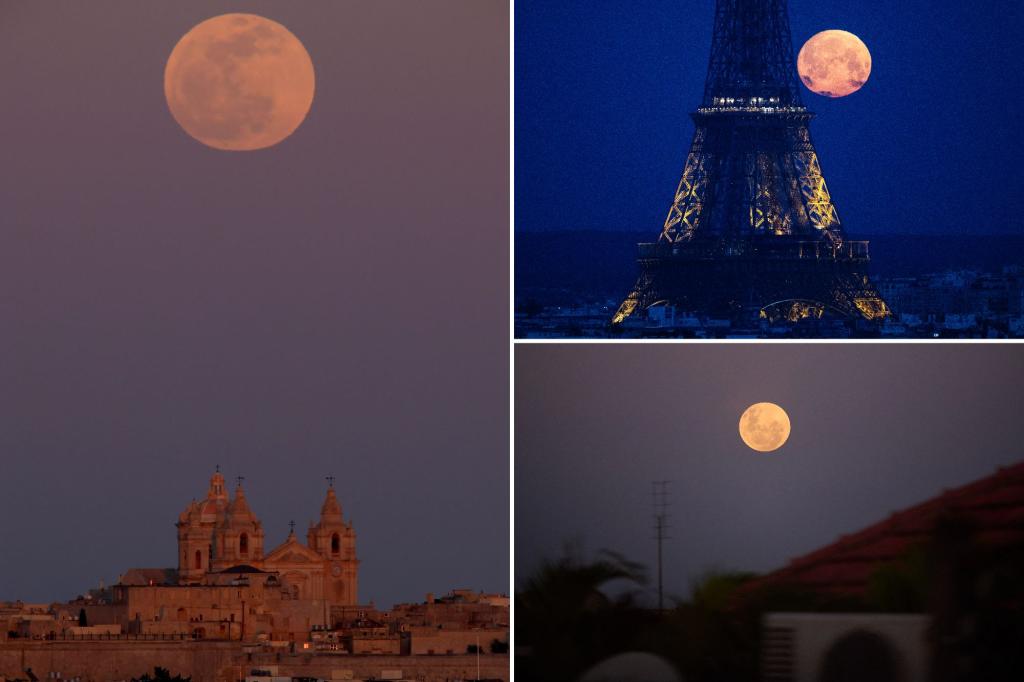April’s full Moon, known as the Pink Moon, will be visible in the night sky throughout the week. The Moon will rise on Tuesday night at 7:49 p.m. ET on the US East Coast and at around 4:48 p.m. PT on the Pacific Coast. Named after the herb moss pink, also known as creeping phlox, the Pink Moon signifies the arrival of spring. Various Native American tribes and cultures have different names for this Moon, such as the Egg Moon, Fish Moon, and Sprouting Grass Moon. In the Hebrew calendar, it is referred to as the Passover or Pesach Moon.
Despite the beautiful celestial display, some regions may experience difficulties in viewing the full Moon. The Northeast, Southern California, and the South may have over 50% cloud coverage on Tuesday night due to a cold front moving through the Great Lakes and pushing into the Northeast. However, other regions like the Great Lakes, Upper Plains, Southwest, and Southeast are expected to have relatively clear skies, presenting a good opportunity for photography enthusiasts to capture stunning views of the Moon and its features.
The Maine Farmers’ Almanac initiated the use of Native American names for full Moons in the 1930s, leading to the widespread recognition of the various names associated with each full Moon. The Pink Moon, for example, is named after the pink bloom of the herb moss pink, which is native to the eastern US. This tradition of naming full Moons based on seasonal changes and natural phenomena continues to hold significance in many cultures worldwide. A full Moon is often seen as a symbol of transformation, rebirth, and renewal, marking the changing seasons and cycles of life.
For photographers, a full Moon presents an excellent chance to capture enchanting images of the night sky. Photographers from all over the world have seized this opportunity to showcase lunar landscapes against iconic backdrops such as the Eiffel Tower in Paris and the Statue of Liberty in New York. The bright light of the Moon illuminates the surrounding landscape, creating a magical atmosphere that is visually captivating and artistically inspiring. Through creative photography techniques and unique perspectives, photographers can showcase the beauty and mystery of the Moon in a way that connects viewers to the wonders of the night sky.
The celestial event of a full Moon has captivated humans for centuries, inspiring myths, legends, and cultural traditions that reflect the universal fascination with the Moon’s mystical allure. In ancient times, the Moon was revered as a deity, believed to influence the tides, seasons, and human emotions. Today, the full Moon continues to be a symbol of wonder and curiosity, drawing people from all walks of life to gaze up at the night sky in awe and contemplation. Whether viewed through the lens of a telescope or the naked eye, the full Moon is a reminder of the vastness and beauty of the universe that surrounds us, inviting us to marvel at the mysteries of the cosmos.
As the Pink Moon rises in the night sky, it serves as a beacon of hope and renewal, symbolizing the arrival of spring and the promise of new beginnings. The changing phases of the Moon remind us of the cyclical nature of life and the importance of embracing change and transformation. Just as the Moon waxes and wanes, so too do our lives ebb and flow, moving through cycles of growth, decline, and rebirth. As we gaze up at the Pink Moon, we are reminded of the interconnectedness of all living beings and the eternal dance of light and shadow that shapes our world.















